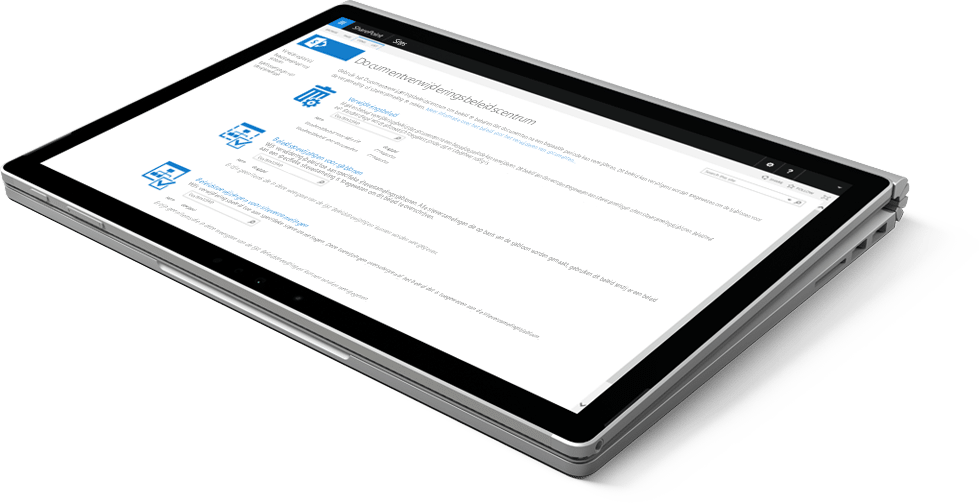Time flies. It’s been 20 years since Microsoft released the first version of SharePoint in 2001. Ever since then, the platform has undergone several transformations to become the product it is today. The statistics don’t lie: in 2020, Microsoft reported a total of 200 million SharePoint users.
SharePoint revolutionized content management and document management. When it was released, it provided a solution to a diversity of problems businesses were facing – and it used to even be free back then. Instantly, companies could save on ECM (Enterprise Content Management) costs and increase their efficiency by large margins. No longer did employees need extensive knowledge of document management and processes to be able to work with complex systems.
Nowadays, it’s hard to imagine a business world without SharePoint having its place in it. Ironically, this is exactly what most companies are struggling with. They unfortunately make the same mistake regularly: they don’t view SharePoint as a company-wide platform for conducting business.
In addition to this, Microsoft is focusing heavily on their cloud-based solution of Office 365, which has a lot of overlap with SharePoint on-premises. Unfortunately, this causes even more confusion. However, as of now the two products exist simultaneously and this is not going to change any time soon.
What is the best way to use SharePoint?
In 2016, Prof. Dr. Arno Hitzges and Prof. Dr. Thorsten Riemker-Gurki published the results of a survey conducted among 300 CEOs of German companies. A notable conclusion of this survey is that only 56%, just over half, thinks that the usability of SharePoint is “good” or “very good”.
Also in 2016, AIIM researched the use of SharePoint. Over half of the respondents view SharePoint as “a challenge”. These statistics show that there is work to be done. On the other hand, it contradicts the above-mentioned statistics of an ever-growing SharePoint user base even in 2017.
This suggests that, despite the apparent struggles with usability, SharePoint is still a major player in the industry. Microsoft does try to tackle these problems, as they are continually improving the platform and are still releasing regular new versions and updates. Users also have a lot of customization options and the ability to make life easier with add-ons.
In my opinion, the root of the problem often stems from the initial expectations around SharePoint combined with the implementation strategy that was used. A change in mindset and approach to SharePoint is often the first step to make it a success.
 Here’s what to expect of SharePoint and how to implement it:
Here’s what to expect of SharePoint and how to implement it:
SharePoint should be owned by the business, not by a specific department
One of the most common mistakes people make is to view SharePoint solely from an IT-perspective or even a communication perspective. Both couldn’t be farther from the truth. SharePoint is a business platform for the whole company, and should be treated as such. It should be owned by the business, and the management of a company should have a clear understanding of the value SharePoint can add.
If the management incorporates SharePoint in the company strategy, it will increase the chance of success immensely. They will free up a larger budget for deployment, implementation and training employees. Likewise, it will give you the space and time you need to implement SharePoint properly and accurately.
Replace existing applications if you can, integrate them otherwise
Thinking that SharePoint is a stand-alone application is a common misunderstanding. SharePoint is a business platform that can replace existing applications but can also integrate them into its own functionality.
The standard functionality of SharePoint goes a long way and this alone can replace the use of many existing applications. The key is to figure out the current business processes and which applications are used to support them. SharePoint will likely be able to replace a lot of the applications, but some will simply be irreplaceable. In these cases, some custom development or third party technology could still integrate the information-output of this application into the SharePoint platform.
The business processes should always play a central role in the decision making around SharePoint implementations and the linking of SharePoint with existing applications. By building the platform around business processes, you will get the most value out of SharePoint. Like mentioned above, this is something the management should realize and they should anticipate the need for developing custom solutions. Optimal process workflows will yield optimal long term results and efficiency.
Develop a policy around information
This is also called an Information Governance Framework. A company should have a policy around information and data and SharePoint should meet the requirements of this policy. Make sure to document which metadata is expected for records, files and documents. Double check if the old files that will be migrated to SharePoint already meet these requirements or not.
Having a clear IG policy goes a long way in the long term and building the SharePoint solution around this policy will have a positive effect on usability, especially as the number of files grows and the platform truly becomes the heart of the organization and its processes.
Stimulate user adoption by training your employees
I can’t stress this enough: when employees complain about usability of the new SharePoint platform, this usually has to do with a lack of training. You should give the right training to the right users. Give training sessions about topics like content management and records management. Engage end-users from the start by actively involving them in the development process of the SharePoint platform. Have special attention for usability and meeting requirements of end-users.
The SharePoint site could have a beautiful design and be very user friendly, but at the end of the day, you want your end-users to actually use the platform. If they don’t, the implementation can be considered a failure after all. This makes user adoption one of the most critical parts of any SharePoint implementation.
📄 Read also: SharePoint Intranet and user adoption

Tim Bogemans

The Ready-To-Go Intranet that gets
everyone involved and highly productive
everyone involved and highly productive


